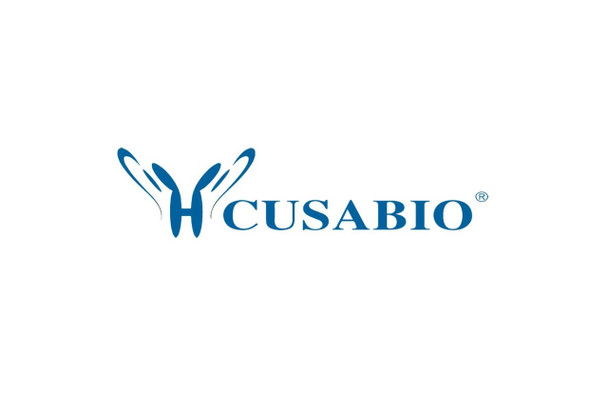Cusabio Virus & Bacteria Recombinants
Recombinant Shigella flexneri serotype X E3 ubiquitin-protein ligase ipaH9.8 (ipaH9.8) | CSB-EP513237SZC
- SKU:
- CSB-EP513237SZC
- Availability:
- 13 - 23 Working Days
Description
Recombinant Shigella flexneri serotype X E3 ubiquitin-protein ligase ipaH9.8 (ipaH9.8) | CSB-EP513237SZC | Cusabio
Alternative Name(s): Invasion plasmid antigen ipaH9.8
Gene Names: ipaH9.8
Research Areas: Others
Organism: Shigella flexneri serotype X (strain 2002017)
AA Sequence: MLPINNNFSLPQNSFYNTISGTYADYFSAWDKWEKQALPGEERDEAVSRLKECLINNSDELRLDRLNLSSLPDNLPAQITLLNVSYNQLTNLPELPVTLKKLYSASNKLSELPVLPPALESLQVQHNELENLPALPDSLLTMNISYNEIVSLPSLPQALKNLRATRNFLTELPAFSEGNNPVVREYFFDRNQISHIPESILNLRNECSIHISDNPLSSHALQALQRLTSSPDYHGPRIYFSMSDGQQNTLHRPLADAVTAWFPENKQSDVSQIWHAFEHEEHANTFSAFLDRLSDTVSARNTSGFREQVAAWLEKLSASAELRQQSFAVAADATESCEDRVALTWNNLRKTLLVHQASEGLFDNDTGALLSLGREMFRLEILEDIARDKVRTLHFVDEIEVYLAFQTMLAEKLQLSTAVKEMRFYGVSGVTANDLRTAEAMVRSREENEFTDWFSLWGPWHAVLKRTEADRWAQAEEQKYEMLENEYPQRVADRLKASGLSGDADAEREAGAQVMRETEQQIYRQLTDEVLALRLSENGSQLHHS
Source: E.coli
Tag Info: N-terminal 6xHis-tagged
Expression Region: 1-545aa
Sequence Info: Full Length
MW: 66 kDa
Purity: Greater than 90% as determined by SDS-PAGE.
Relevance: Effector proteins function to alter host cell physiology and promote bacterial survival in host tissues. This protein is an E3 ubiquitin ligase that interferes with host's ubiquitination pathway and modulates the acute inflammatory responses, thus facilitating bacterial colonization within the host cell. Interacts with IKBKG (NO) and TNIP1 (ABIN-1), a ubiquitin-binding adapter protein, which results in TNIP1-dependent 'Lys-27'-linked polyubiquitination of IKBKG. Consequently, polyubiquitinated IKBKG undergoes proteasome-dependent degradation, which perturbs NF-kappa-B activation during bacterial infection. Uses UBE2D2 (UBCH5B) as an E2 ubiquitin-conjugating enzyme. Mediates polyubiquitination of host U2AF1, leading to its proteasomal degradation.
Reference: A bacterial E3 ubiquitin ligase IpaH9.8 targets NEMO/IKKgamma to dampen the host NF-kappaB-mediated inflammatory response.Ashida H., Kim M., Schmidt-Supprian M., Ma A., Ogawa M., Sasakawa C.Nat. Cell Biol. 12:66-73(2010)
Storage: The shelf life is related to many factors, storage state, buffer ingredients, storage temperature and the stability of the protein itself. Generally, the shelf life of liquid form is 6 months at -20?/-80?. The shelf life of lyophilized form is 12 months at -20?/-80?.
Notes: Repeated freezing and thawing is not recommended. Store working aliquots at 4? for up to one week.
Function: Effector proteins function to alter host cell physiology and promote bacterial survival in host tissues. This protein is an E3 ubiquitin ligase that interferes with host's ubiquitination pathway and modulates the acute inflammatory responses, thus facilitating bacterial colonization within the host cell.
Involvement in disease:
Subcellular Location: Secreted, Host cytoplasm, Host nucleus
Protein Families: LRR-containing bacterial E3 ligase family
Tissue Specificity:
Paythway:
Form: Liquid or Lyophilized powder
Buffer: If the delivery form is liquid, the default storage buffer is Tris/PBS-based buffer, 5%-50% glycerol. If the delivery form is lyophilized powder, the buffer before lyophilization is Tris/PBS-based buffer, 6% Trehalose, pH 8.0.
Reconstitution: We recommend that this vial be briefly centrifuged prior to opening to bring the contents to the bottom. Please reconstitute protein in deionized sterile water to a concentration of 0.1-1.0 mg/mL.We recommend to add 5-50% of glycerol (final concentration) and aliquot for long-term storage at -20?/-80?. Our default final concentration of glycerol is 50%. Customers could use it as reference.
Uniprot ID: D2AJU0
HGNC Database Link: N/A
UniGene Database Link: N/A
KEGG Database Link: KEGG
STRING Database Link: N/A
OMIM Database Link: N/A









